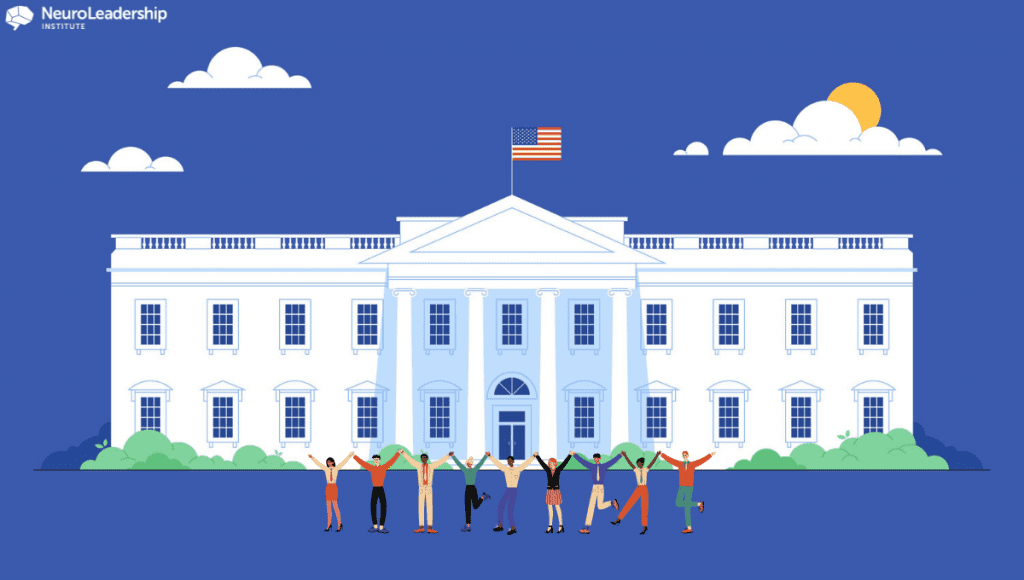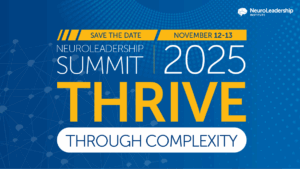We recently wrote about the common challenges that agencies can face in complying with the President’s Executive Order on DEIA (diversity, equity, inclusion and accessibility), highlighting some of the critical components for agencies to address with a science-based approach. We noted that care must be taken to avoid some of the natural reactions humans have to mandates, and that habit formation is key to creating impact. Our understanding of the neuroscience that guides human behavior — combined with a couple of decades’ worth of experience — has helped public and private sector organizations with their toughest DEIA challenges. With this depth of knowledge and expertise, we advise agencies to navigate the path towards diversity, equity, inclusion, and accessibility by following these three steps.
Step #1: Take a solution-focused approach
When mandates come down from higher headquarters, it’s tempting to approach the requirement from a compliance stance with reactionary policies and training to avoid non-compliance. This avoidance focus can lead to ‘check-the-box’ efforts that lack depth and sustainability, reducing the likelihood that the changes will improve organizational culture and operational effectiveness, long term.
Systemic change at scale takes depth and time. One of the ways agencies can take a solution-focused approach, and increase the pace of government progress, is with a growth mindset. Taking a proactive approach and looking for opportunities to experiment creates an environment where the goal is not to prove you’ve taken action in a situation, but rather to take actions that improve a situation.
Science tells us being proactive versus reactive makes a difference in outcomes. In one study, organizations that took a proactive approach to corporate social responsibility were more innovative in creating environmentally conscious products than organizations taking a reactive approach. Having a positive, proactive mindset towards growth and systemic improvement is something leaders at every level must role-model. Talk the talk, then walk the walk.
Step #2: Provide a data-safe environment
At NLI, we have a mantra: “follow the science, experiment, follow the data.” It’s clear in the executive order that the President sees value in that mantra: “Take an evidence-based and data-driven approach to determine whether and to what extent agency practices result in inequitable employment outcomes, and whether agency actions may help to overcome systemic societal and organizational barriers.”
One challenge agencies face in taking a data-driven approach is the lack of comprehensive data. It’s hard to gather self-reported demographic data when people don’t feel safe volunteering personal information that makes them feel vulnerable. And requiring demographic data would be troublesome because mandates inherently send people into a threat state.
There are science-based methods, however, to get people to do something important without making it mandatory.. One method which may help move the needle in collecting data is to help people come to their own understanding of why it’s important. There is a ‘why’ network in the brain that signals the value of a task, helping us accomplish difficult things. People also need to feel like they can trust what happens with their personal information, and that it will contribute to the task which now holds intrinsic value. Where there is trust, the data will follow.
Step #3: Take a holistic approach
DEIA is expansive and pervasive, which makes it hard to assess and address without a comprehensive approach. The priorities have been established, but priorities are only one slice of a three slice pie. To come up with a whole solution, priorities must align with habits and systems, as a coherent total solution. We call that PHS.
We often write about PHS because it’s a science-based framework for behavior change, which is ultimately what any change leader needs. The President has defined his priorities and provided autonomy to the agencies charged with implementation. The habits, which are best learned and transferred to the workplace through science-based learning efforts, is where the change happens—making the “H” a very large slice of the pie.
But DEIA is a systemic issue, which means it also needs a wider approach. Systems that can directly impact DEIA efforts can include performance management, hiring, compensation, promotions, and even taskings. When systems lack coherence with priorities and habits, particularly deeply rooted systems of inequity, they can unintentionally inhibit habits from being put into practice. Only by following the science of assessment and bias mitigation will systems enable habit formation.
One more factor for government agencies to consider: pursue and embrace collaborative efforts within the Federal Partnership Initiative. We know from decades of global research in healthcare, science, and innovation that public-private partnerships improve outcomes. Collaboration is a powerful force for change, and is part of the total system.
Even though there is a very real need to comply with the details within the executive order, which can feel overwhelmingly complex, the underlying imperative is clear: move towards a sustainable culture of inclusion. Agencies can focus on solutions aimed at identifying and closing gaps today, and enjoy the long-term benefits from the cultivation of a growth mindset. This executive order is a golden opportunity to follow the science, experiment with novel approaches, and follow the data about what works—potentially laying significant groundwork for private organizations and global institutions to follow.
Would you like to learn more about how the NeuroLeadership Institute can help your government agency improve DEIA outcomes and drive behavioral change at scale? Follow the link below.







